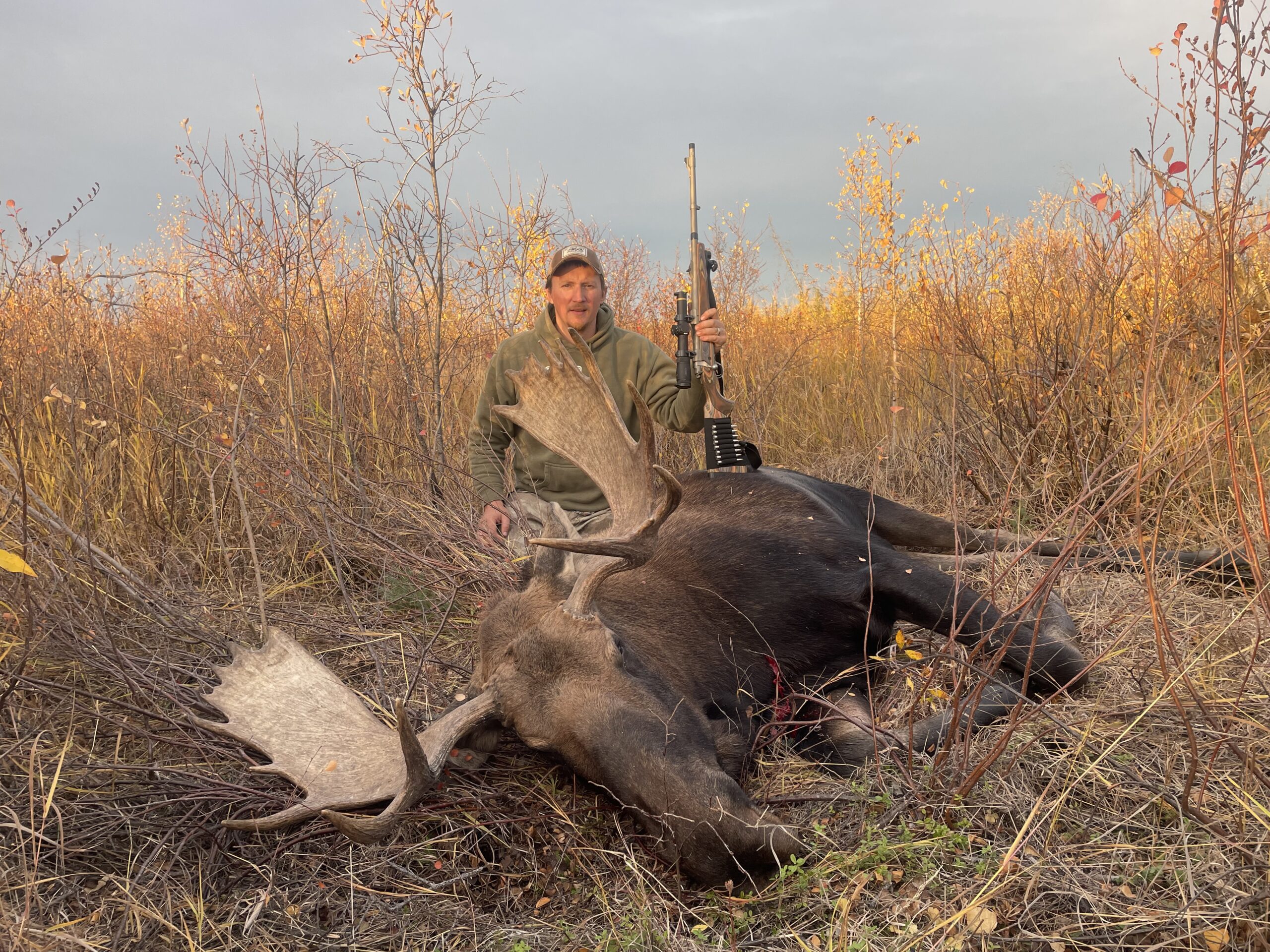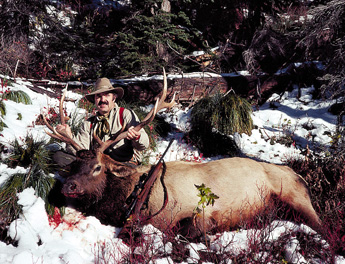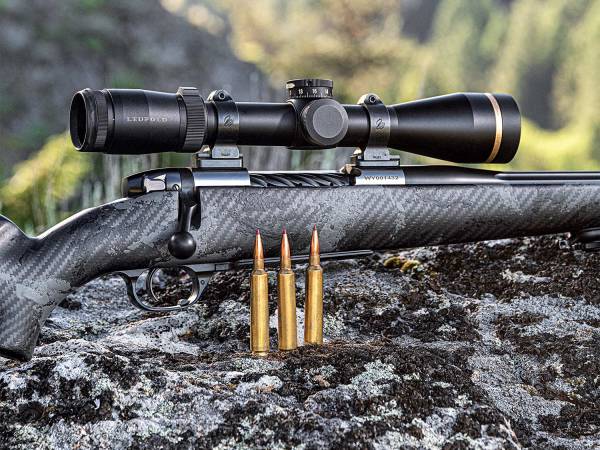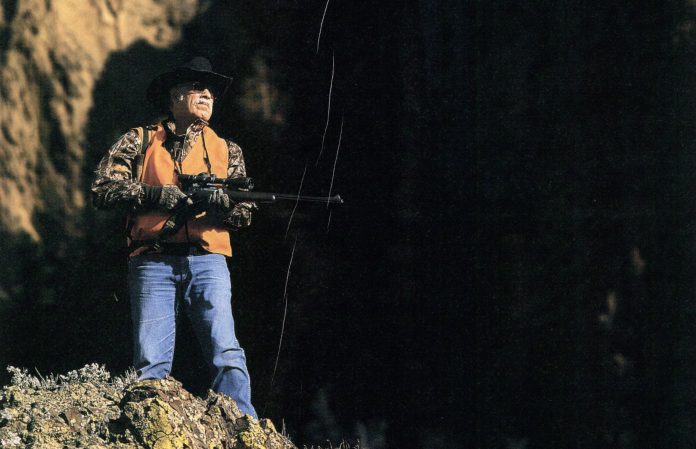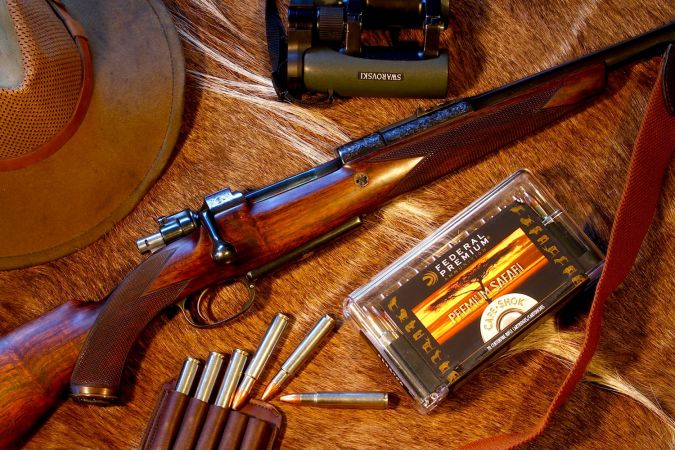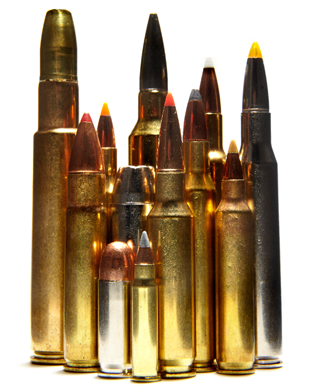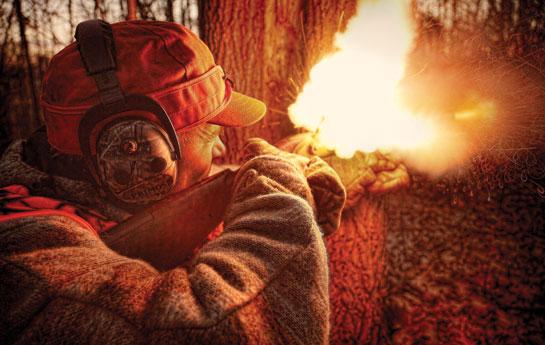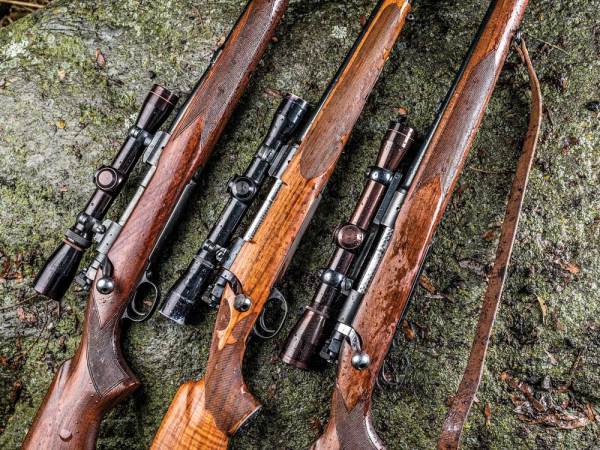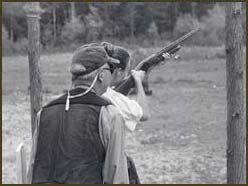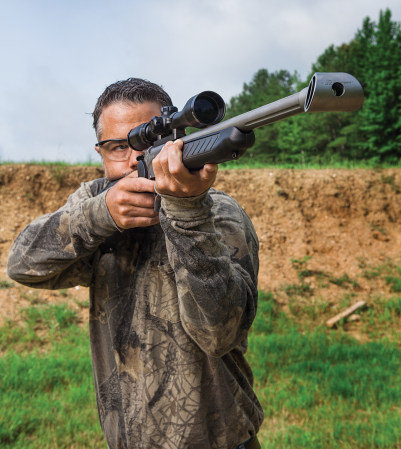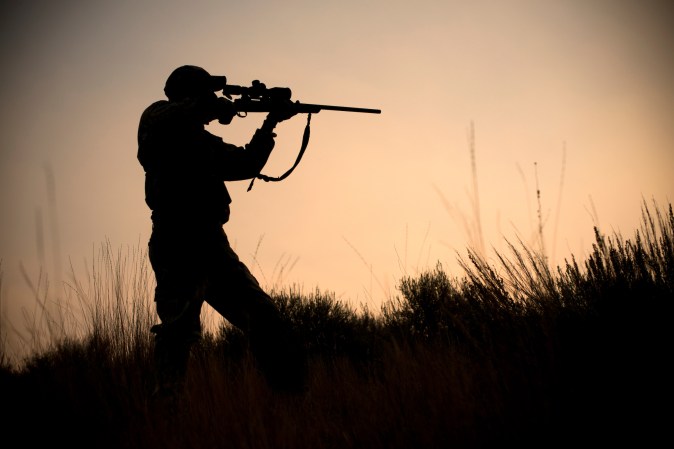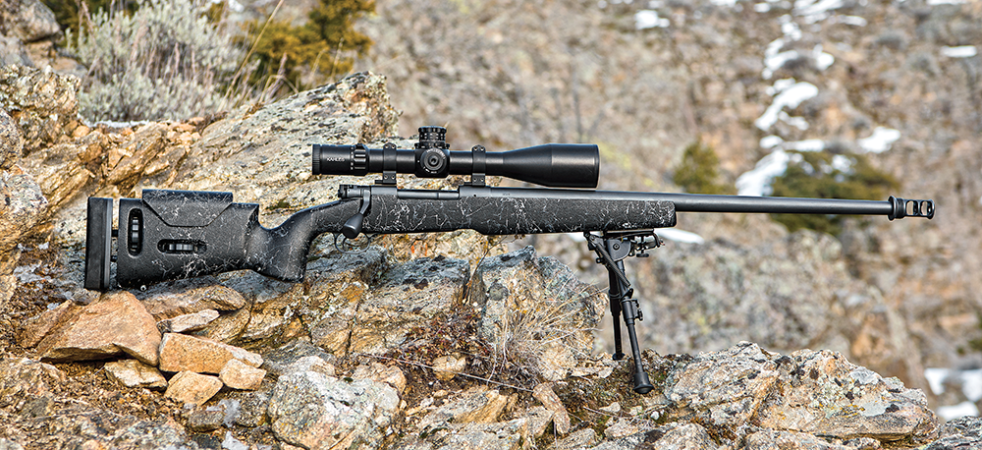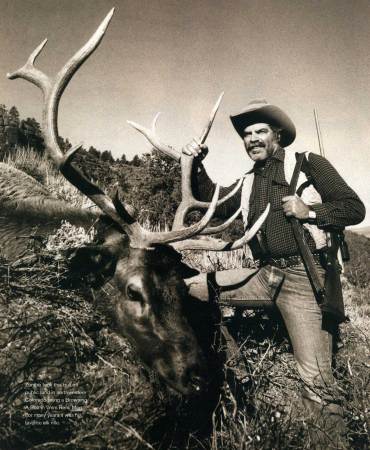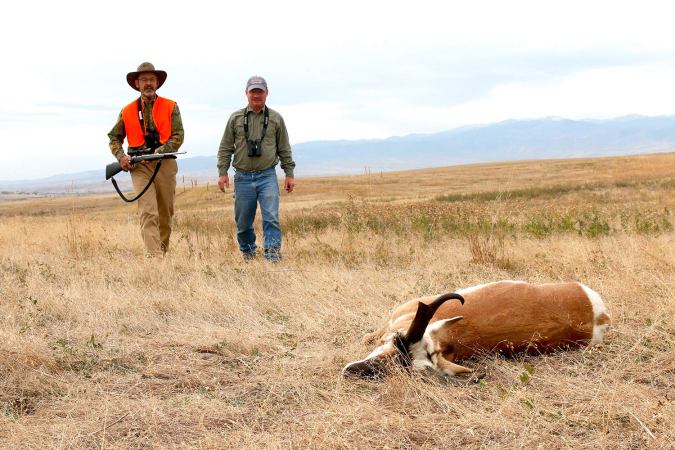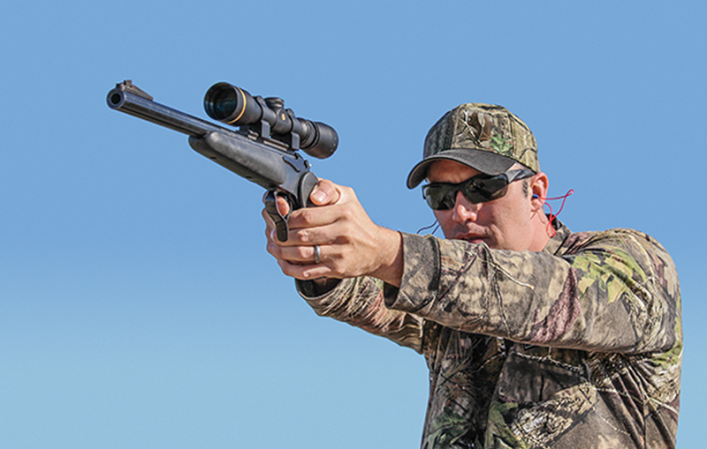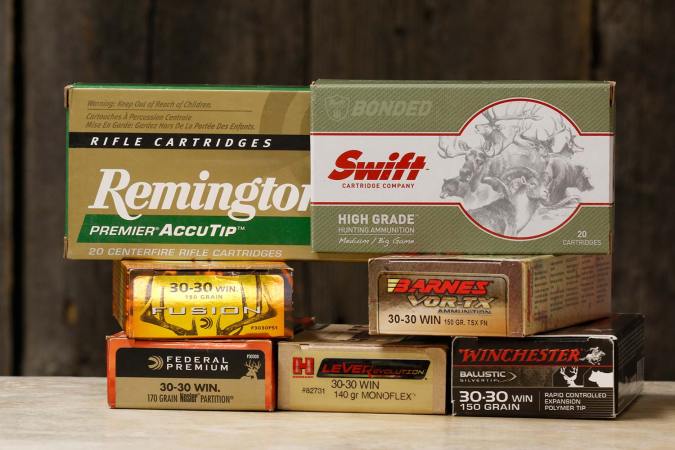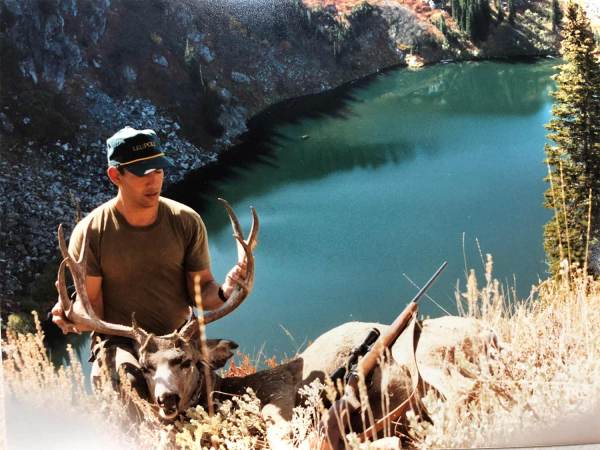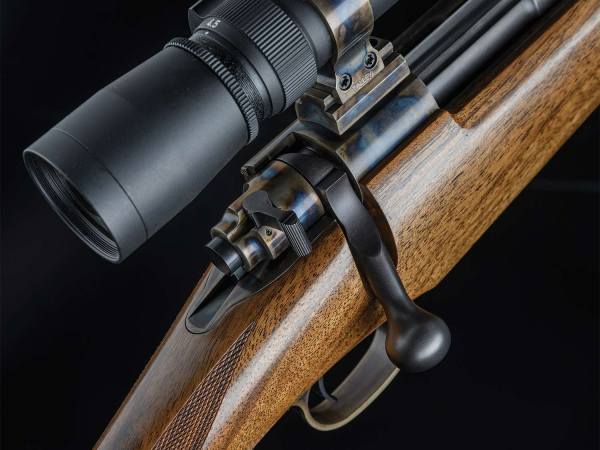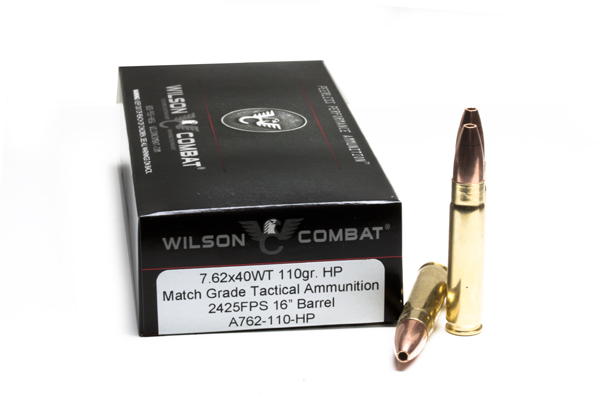We may earn revenue from the products available on this page and participate in affiliate programs. Learn More ›
The following piece, titled Is Recoil Ruining Us?, was written by Jim Carmichel, Outdoor Life‘s former shooting editor and successor to Jack O’Connor. Carmichel published this piece in 2005, and in it he brings up the popularity of magnum cartridges and the valid issue of how recoil will degrade marksmanship. And, importantly, that recoil affects everyone. He makes an argument that power cannot make up for shooter error, and recoil-induced error is totally preventable.
It seemed that when he wrote these words, hunters were trending toward magnum cartridges. However, I don’t know that it was a recent trend; it’s been an issue since the days of O’Connor. In recent years, a clear split has developed between hunters with seemingly irreconcilable mindsets. Bigger and faster cartridges are being developed all the time—just look at Nosler and Weatherby’s impressive lineups. Hell, I just bought a .338 Lapua Magnum myself. On the other side, the 6.5 Creedmoor became popular for a reason—and it wasn’t just because writers were shoving it down the throats of shooters like a spoonful of Robitussin. The 6.5 Creedmoor is inherently accurate, performs well on most game, and it’s very soft on the shoulder.
In a way, the popularity of muzzle brakes since 2005 is a nod to Carmichel’s opinion. Contemporary factory rifles regularly include them—even on mildly-chambered rifles. They certainly make shooting heavy magnum calibers easier on the shoulder—even if they are hell on your ears (and on bystanders). But these rifles are still more difficult to shoot with absolute consistency than lighter-recoiling rounds with less-violent muzzle blast. O’Connor himself referenced recoil-induced flinching numerous times and was a fan of medium-bore cartridges because their reduced recoil made them easier to shoot well. In a piece titled On Getting Kicked, in the April, 1972 issue of Outdoor Life, O’Connor said the following:
“A man can resign himself to heavy recoil. Under the excitement of shooting at heavy and dangerous game he may not notice it much, but I think anyone who says he is oblivious to it is talking through his hat…Most of us are somewhat more sensitive to recoil than we care to admit, and mild recoil is as much of a virtue in a cartridge as high velocity and flat trajectory.”
Certainly, none could argue that O’Connor was afraid to shoot a big rifle.
I’ve seen more than one hunter scratching his head as to why he couldn’t stay on a paper plate at 100 yards from a bench, only to flinch like someone snuck up from behind and scared him after short-stroking the bolt and dry-firing. I find his point to be valid on African plains game as well. Heavy magnum rifles are popular for the “tough-to-kill” game, but the PH I hunted with in South Africa said he prefers his .22-250 for plains game up to Eland, and has seen many taken cleanly with .243’s and .308’s.
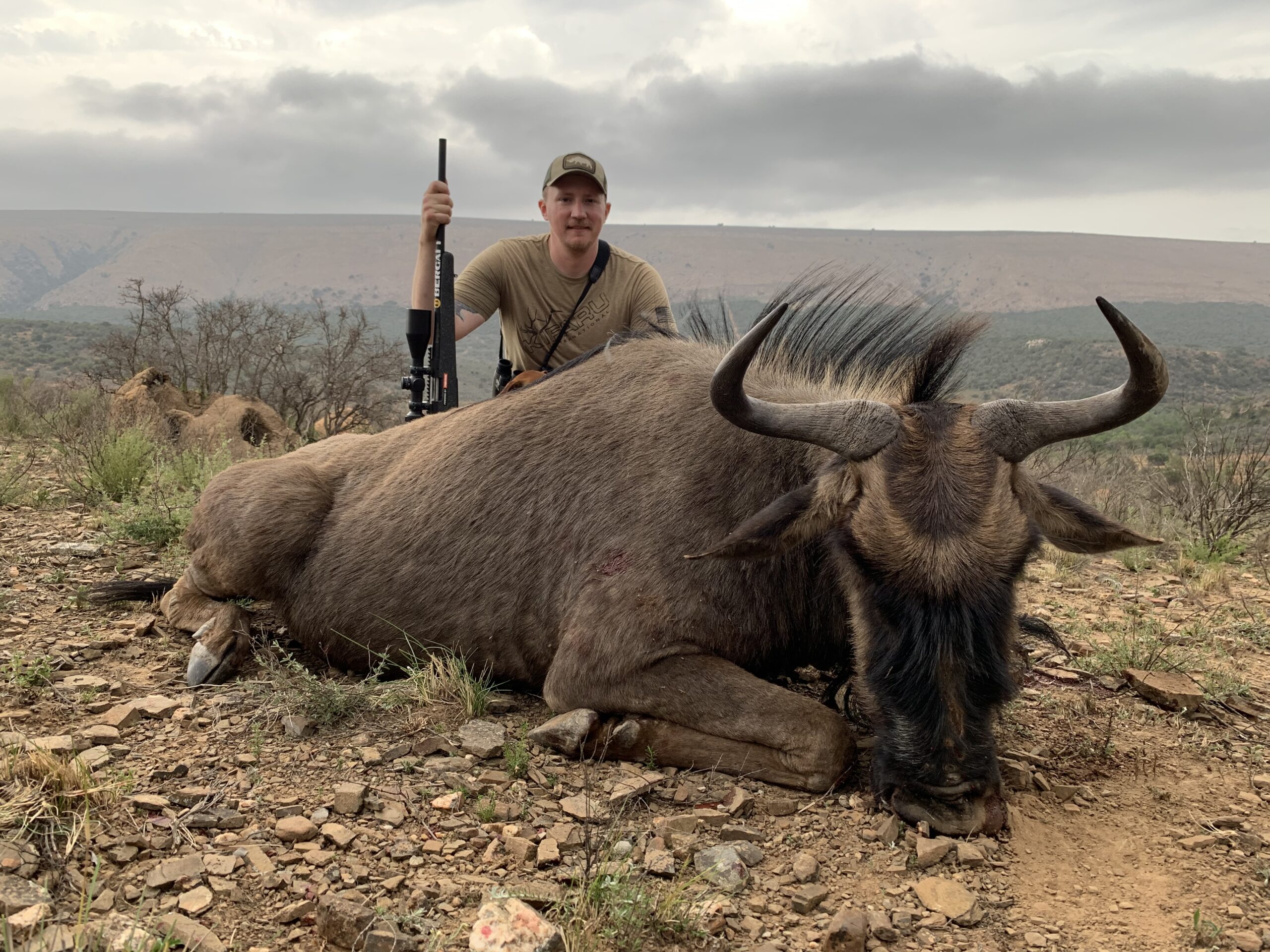
I don’t think Carmichel—or O’Connor for that matter—argued that big magnum cartridges were bad. I certainly don’t think they are. It’s just that those guys appreciated them for what they were, but recognized that it’s easy for people to get sucked into the idea that more is better without realizing the issues that a harder-kicking cartridge can create for the average shooter. The same goes for the “needmoor” super cartridges (as some might satirically characterize them). In the right context, they’re perfectly capable, but they aren’t magic. In either case, there’s no substitute for being able to place a bullet where it needs to go.
Is Recoil Ruining Us?
By Jim Carmichel
A wise proverb warns: “Be careful what you wish for–you might get it.” Sometimes the object of our dearest wishes yields only disappointment and regret. That certainly holds true for what seems to be a widespread notion that bigger, faster, more powerful cartridges will enable us to smite deer and elk at yardages measured in the hundreds. But have we overgunned ourselves to the point where the advantages of ballistic horsepower are outweighed by the disadvantages?
Why Bigger Isn’t Better
Obviously, “overgunned” is a relative term. When relating size and energy to specific game, for instance, are we overgunned if we use a .300 Magnum for whitetails when a smaller, less powerful caliber such as a .250 Savage will do just as well? “No way,” the Use Enough Gun Brotherhood may cry. “A bullet can never hit an animal too hard.” And they put forth some convincing arguments.
But theirs is a rather one-sided discussion because no one is seriously debating the effectiveness of powerful magnum-sized cartridges. After all, we can accept as gospel that a fast-stepping bullet from, say, a .300 Winchester Magnum hits hard, and that its flatter trajectory makes it easier to hit distant targets. The flaw in the argument, however, is the assumption that hunters will fire hard-kicking magnums as accurately as they will lighter calibers. Ah, there’s the rub, because when the recoil factor kicks in, marksmanship can drop faster than a non-magnum bullet at 250 yards. Consider these facts:
- Game is always killed cleanly and efficiently by proper bullet placement.
- Proper bullet placement is a result of good marksmanship.
- When we use equipment that degrades our marksmanship, there is a corresponding loss in our ability to kill game efficiently.
There appears to be a chronic misunderstanding, or underestimation, of this third fact. There is a mistaken, but apparently widespread, notion that poor marksmanship can be compensated for by more powerful cartridges. I call this the “hit ’em harder and they’ll die anyway” rationale.
Such reasoning would have us believe that a hunter is more liable to put his tag on a deer gut-shot with a 270-grain bullet from a .375 H&H Magnum than one similarly hit with a 130-grain bullet from a .270. We might technically suppose that the deer or elk gut-shot with the .375 will succumb to the wound somewhat sooner because of greater shock and tissue damage. But how much sooner? And where?
To wish for a ballistic behemoth that renders instant lights-out for any game animal regardless of bullet placement, we need to think in terms of a 105mm howitzer firing a hollowpoint bullet that explodes a deer like a prairie dog being disassembled by a .220 Swift. Since howitzers and bazookas are pretty much out of the question, we must circle back to good bullet placement in our quest for the quick kill. Read Fact No. 2 again.
I’ve been hanging out with hunters, shooters and wastrels of similar stripe most of my life and have known men of Napoleonic size who seemed to enjoy being kicked silly by big-caliber guns. Conversely, I’ve known hairy-chested hunks who shuddered at the mere thought of a gnat landing on their shooting shoulder.
On average, though, few hunters can take much recoil without having to pay for it sooner or later. And we pay for it in ways that we sometimes don’t even suspect–most commonly in loss of personal marksmanship.
But how did we become so magnumized in the first place? Shooting magazines and gun writers have no doubt encouraged their readers to “think big,” and I can certainly claim my share of the blame. Consider just the literary attention that has been paid to short magnums in recent years.
More troublesome, at least to me, is the increasing notion that game animals are somehow getting harder to kill, as if they are more bulletproof than their daddies and granddads.
In just the past two weeks I’ve read articles by three writers freshly returned from South African farm hunts who used phrases like “tough to kill” in describing rather ordinary species that were successfully done asunder by their big booming magnums. Never mind that for the past century or so the ground has been flying up and hitting these same species when they’ve been struck by bullets from 7×57 Mausers, 6.5 Mannlichers and even gentler calibers. Hunters reading these hair-raising accounts will be inclined to go for more power than they can use.
In his book A Country Boy in Africa, George Hoffman, a professional hunter and safari guide who had seen hundreds of animals shot with all sorts of calibers, stated that while the .338 Win. Mag. was one of his favorite calibers, it was too much for plains game, and that “smaller calibers serve the purpose much better.” Many of his clients couldn’t handle the recoil and shoot accurately with even the relatively mild-kicking (by African rifle standards) .338 Mag.
Shorter Isn’t Less
The new short magnums are marvels of internal ballistics and have already established design trends that will be with us for generations to come. But let’s not confuse short with little, or kid ourselves about the potency, fore and aft, of this new breed of cartridge.
Though they may appear cute and cuddly, the .300 Remington and Winchester Short Magnums equal the velocity of a .300 Win. Mag. with 180-grain bullets, and are definitely hard-kicking magnums any way you look at them. Blast this energy out the muzzle of a rifle weighing scarcely more than 7 pounds (Remington’s M-7SS) and you get the dubious thrill of about 25 pounds of recoil.
Being “overgunned” is most obvious when a hunter jerks the trigger and hunches his shoulder in anticipation of recoil and squinches his eyes so tight he has only the vaguest idea which way the bullet is heading. But being overgunned can have more subtle effects, too.
I talk to lots of hunters, many of whom tell me they handle powerful magnums without a problem. This always leads me to ask how much they practice with their hard-kicking rifles. The answer is usually something like, “Well, I shoot it a few rounds when I check the scope before I go hunting.”
In other words, these hunters aren’t getting in the practice they need to be truly competent marksmen. Magnum-class ammo costs more than ordinary calibers, of course, which in some cases may be a reason for scant or nonexistent practice, but the fact of the matter is that there simply aren’t many shooters who truly enjoy practicing with hard-kicking rifles. (This also applies to hard-punching shotguns and handguns.) After a few punishing rounds from a sighting-in rest and a few more from hunting positions, we tend to get out of the mood for more practice and our marksmanship suffers.

Das Flinch
A while back, when I was hunting in Scotland for the petite roe deer, our party was joined by a German who presented himself in traditional hunting lederhosen, a Tyrolean hat and a rifle covered with engraving, carvings, and other such frills.
The expensive scope was as big as the stovepipe in a lumber camp cook house and the caliber was 8x68mm, which is popular in Europe and would be a good choice for North American moose and big bears.
Read Next: 10 Classic Hunting Rifles Every Hunter Should Own
The morning we went out to check our sights it became quickly apparent this fellow was virtually terrorized by the recoil of his rifle. Not only was he overgunned for the 90-pound roe, but he was clearly overgunned for himself. When he fired at a foot-wide target at 60 yards he flinched so badly it was impossible to know for sure whether the rifle was sighted in or not.
For two days he blasted away at deer near and nearer without touching a hair, so on the third and final day I offered him the use of the little .222 rifle with which I’d cleanly dropped two nice bucks. At first he seemed a bit insulted, as if my simple little rifle was in no way up to his standards, but at the gamekeeper’s urging he finally accepted the offer.
That night he was all smiles, songs and toasts because he’d finally connected on the trophy he’d come all the way to Scotland for, thanks to a shooter-friendly rifle and a caliber that didn’t punch his lights out every time he pulled the trigger. Mostly, though, he was happy that he had learned a lesson lots of other overgunned hunters can benefit from.

